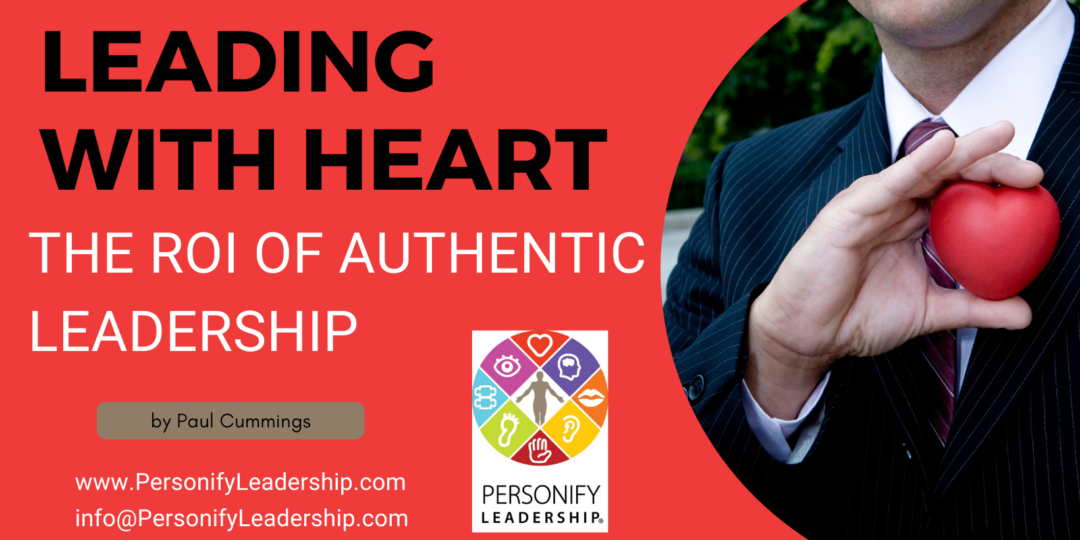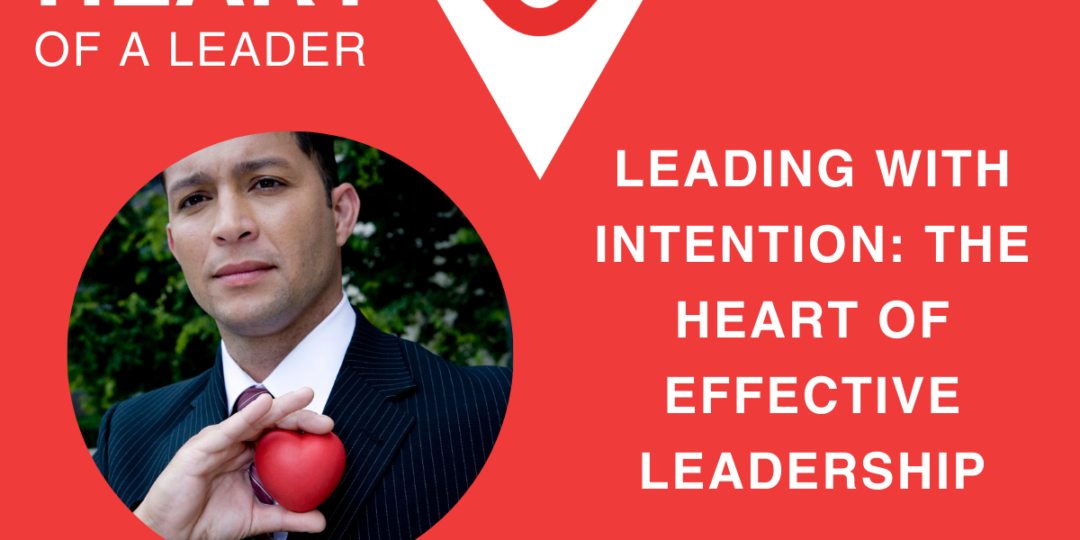Leadership isn’t just about what you say. It’s about how you show up—every day, in every interaction. Your body language, tone, and energy send signals long before your words land.
Think about it: Have you ever walked into a room and felt tension, even before anyone spoke? Or trusted someone more simply because they looked calm, open, and engaged? These are leadership signals. And people are reading them, whether you mean to send them or not.
Your team is constantly asking themselves:
- Can I trust this person?
- Do they mean what they say?
- Do they care about me?
If your tone doesn’t match your intention—or your posture shows frustration instead of curiosity—you may be sending the wrong message. That’s when misalignment happens, and trust starts to erode.
Try This:
Before your next one-on-one or team meeting, pause.
Ask yourself:- What’s my intention in this moment?
- Does my body, face, and voice reflect that?
Even a 30-second reset can shift how others receive you.
Leaders who are aware of their signals—and adjust them to match their values—create safety, trust, and stronger relationships.
So, how are you showing up today?
Leading with Heart: The ROI of Authentic Leadership
- Mar 25, 2025
- By personifyadmin
- In Newsletters
- 0 Comments
“People don’t care how much you know until they know how much you care.” – John C. Maxwell
Great leadership isn’t just about strategy, goals, or results. It’s about people.
When you lead from the heart, you create a culture where trust, passion, and purpose thrive—and that’s where real success happens. Have you given much thought to what bad leadership costs organizations?
The Heart of a Leader: The ROI of Authentic Leadership
In today’s competitive business landscape, leadership is often reduced to performance metrics and revenue targets. While these are essential, they overlook a critical foundation—intentional leadership that fosters trust, engagement, and purpose. At the core of this approach is the Heart of a Leader, a key principle in the Personify Leadership curriculum.
Leading with Heart: More Than Just a Concept
Leading with Heart isn’t about sentimentality; it’s about deliberate action that builds trust, strengthens teams, and drives long-term success. Authentic leadership goes beyond transactional management, cultivating real connections with employees, customers, and stakeholders. When leaders act with integrity and intention, they inspire meaningful performance improvements that directly impact the bottom line.
The Business Case for Intentional Leadership
In an era where employees seek purpose over paychecks, leadership style plays a decisive role in organizational success. Recent research from Gallup shows that companies with engaged teams outperform competitors by 147% in earnings per share. This success stems from leaders who create psychological safety, trust, and a sense of belonging.
Intentional leaders prioritize relationships over transactions, ensuring employees feel valued. This effort leads to higher productivity, lower absenteeism, and greater innovation. Moreover, turnover—a costly challenge for businesses—decreases significantly when leaders demonstrate care and recognition. Considering that replacing an employee costs 50% to 200% of their salary, the financial benefits of strong leadership are undeniable.
Employee Engagement as a Strategic Advantage
The best organizations understand that engagement is not a perk but a competitive edge. Leaders who invest in employee well-being and professional growth create workplaces where people are motivated to perform at their best.
Recognition is a powerful tool—employees who feel appreciated are likelier to stay, collaborate, and take initiative. A simple thank-you or public acknowledgment can significantly boost loyalty and productivity. Additionally, trust-based leadership reduces workplace stress, a leading cause of burnout and disengagement. Organizations with people-first cultures report up to 70% lower stress-related absenteeism, ensuring employees remain present and invested.
Beyond Employees: The Customer and Stakeholder Impact
The impact of intentional leadership extends beyond employees to customers and stakeholders. Organizations with strong leadership values build brand loyalty, enhance reputation, and attract high-value partnerships. Customers who connect with a company’s mission are more likely to remain loyal, advocate for the brand, and increase spending.
Studies show that businesses with ethical leadership retain 23% more customers and generate 21% higher profitability than competitors. Why? Because integrity-driven leadership fosters reliability and trust, making customer experiences more consistent and authentic.
The Measurable ROI of Leading with Intention
Leadership development programs, such as Personify Leadership, equip leaders with the tools to lead authentically and effectively. The return on investment (ROI) is tangible, delivering:
· Lower turnover costs through higher employee retention
· Higher productivity as engaged employees perform better
· Reduced absenteeism and healthcare costs from lower workplace stress
· Stronger customer loyalty and revenue growth through enhanced reputation
In a competitive market, people-first leadership isn’t just the right thing to do—it’s a financial imperative. Sustainable success isn’t just about results; it’s about how those results are achieved.
Final Thoughts: Leadership as a Competitive Advantage
Organizations that foster intentional, heart-centered leadership create workplaces where employees thrive, customers stay loyal, and financial performance soars. Leading with Heart is not a “soft skill”—it’s a strategic necessity.
Great leaders recognize that performance reflects culture, and culture is shaped by leadership. When leaders demonstrate trust, care, and integrity, they create an environment where people contribute, innovate, and stay committed to the company’s mission.
The most significant competitive advantage an organization can have is its people. The best way to maximize that advantage is by leading with intention, Heart, and a commitment to long-term success.
~Paul Cummings, Chief Operations Officer
Leading with Intention: The Heart of Effective Leadership
- Sep 04, 2024
- By personifyadmin
- In Newsletters
- 0 Comments
At the core of successful leadership lies intention—the purpose behind every action a leader takes. This month we’re focusing on the first of our eight competencies, the Heart of a Leader.
The “Heart of a Leader” module in the Personify Leadership program emphasizes this, helping leaders align their intentions with their actions. Leaders who consistently focus on their team’s best interests build stronger connections and foster trust within their organizations. This trust, formed through intentional and transparent leadership, is the foundation of effective and respected leadership.
Understanding the signals you send is essential to ensuring that your actions reflect your true intentions. Often, a leader’s behavior sends unintended messages, leading to misalignment between what is said and what is done. In the “Heart of a Leader” module, leaders are encouraged to become more aware of the signals they send. Whether leading a team meeting or giving feedback, a leader must ensure their actions reflect their intent to support and uplift the team, not just drive personal success.
Trust in leadership also hinges on the “Law of Reciprocity.” As leaders, the signals you send and the actions you take will often be mirrored by your team. This reciprocal relationship underscores the importance of setting positive examples and leading by example. Leaders who prioritize the well-being of others often find their teams responding with increased loyalty, dedication, and a shared commitment to organizational goals.
Ultimately, intentional leadership is about aligning personal, team, and organizational interests. Leaders must regularly reflect on their actions and their impact on those they lead. By doing so, they can foster a work environment built on trust, where every team member feels valued, respected, and motivated to contribute. Leading with intention ensures that a leader’s heart is always in the right place, guiding their team toward collective success.
Questions to ask yourself:
- Q1: How can you become more aware of the signals you are sending to your teams?
- Q2: What practical steps can you take to build a trust-rich environment using the Law of Reciprocity?
- Q3: How does aligning personal and organizational interests benefit long-term team success?
What would you add to this list?
If you are interested in building more skills in this area, consider registering for our next Open Enrollment course.
Tag: Intentional leadership
© 2012-2025 Personify Leadership. All Rights Reserved.




Recent Comments